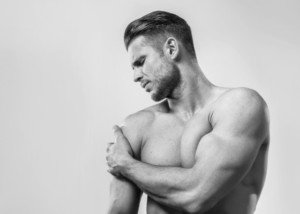
Here are great but simple barbell workout routines for beginning fitness enthusiasts.
When I was a trainer I had my beginner clients performing these inviting barbell routines during their workouts.
If you already belong to a gym or are planning on joining one, then you will have plenty of barbells at your disposal. Barbells come in different lengths.
The standard Olympic bar is the longest and weighs 45 pounds alone without added weight plates.
Other barbells are “pre-weighted” in that their weight load is fixed, and range from 20 pounds to over 100 pounds. They are shorter in length than the Olympic bar. Beginners can use both types of barbells.
Another type of barbell routine for the beginner is that of the tracked barbell. The bar, which can be loaded with plates, is part of a large apparatus; the bar moves up and down on a track, eliminating the need for the beginner to balance. These are safer than “free” barbells, and ideal for beginners.
Bench press. This can be with a flat or inclined bench, though the incline will recruit less chest muscle and more shoulder muscle.
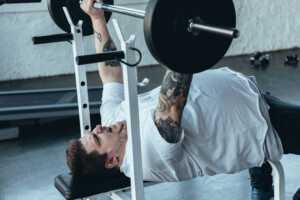
Shutterstock/LightField Studios
Beginners should start out with a very light barbell, even if they think they’re strong, because bench pressing also targets shoulder tendons, which can be sensitive to new workout routines.
I prefer to keep feet flat on the bench, legs bent, but to each his own. But keeping feet flat on the bench will discourage a common cheat move: that of lifting one’s back off the bench in an attempt to push the barbell up. 12-15 reps.
Good-mornings. Start with the Olympic bar without weights, or a lighter barbell if necessary. See the two illustrations below that depict this exercise.
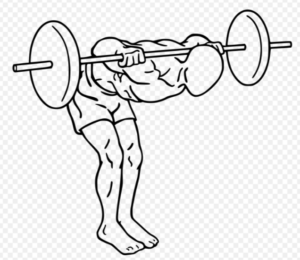
Stand with feet shoulder width apart (ideally), knees slightly bent at all times.
Bend at hips, not waist.
Bend only as far as getting your trunk parallel with floor. Don’t hunch or bend back.
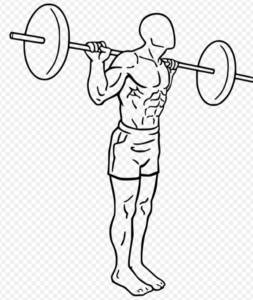
Everkinetic.com
Remember: Bend at the hips! Straighten back into start position. Do 12-15 repetitions. This works primarily the lower back and hamstrings, though beginners will feel other muscles being recruited.
Squats with tracked barbell machine. This apparatus is commonly called the Smith machine, though it comes in different makes and models.
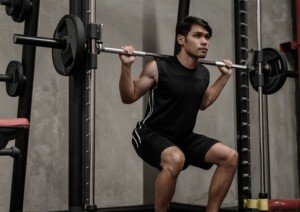
Shutterstock/Auttapol Sangsub
Before performing this routine, make sure that the safety locks in the apparatus are in place (ask a personal trainer for assistance).
Most beginners can handle some weight on the bar, but to get a feel for this device, start with a 10 pound plate on either side of the barbell.
Position yourself under it so that the bar “rests” across your upper back (NOT neck!), hands on the bar for guidance. It’s best to have a personal trainer demonstrate first, correct squatting form.
Key elements to correct squatting form are:
1) Maintain an arch in lower back
2) Maintain a “puffed out” chest
3) Keep head up slightly
4) Keep feet flat on floor at all times
5) Don’t squat further than femurs parallel to the floor, and
6) Never, ever allow your lower back to lose its arch. Do 12-15 repetitions.
Standing curls. Stand with legs shoulder width apart, knees slightly bent at all times, holding barbell in front, palms facing away from body.

Shutterstock/Racool_studio
Keeping upper arms against body and vertical, bend lower arms to raise the weight as high as you can WITHOUT moving your upper arms. Lower with control. 12-15 reps.
Never swing the barbell up by swaying your back; this is cheating and can harm the back.
There are loads of barbell routines that beginners can eventually progress to, but the ones listed here are a great start for any beginner.
 Lorra Garrick is a former personal trainer certified through the American Council on Exercise. At Bally Total Fitness she trained women and men of all ages for fat loss, muscle building, fitness and improved health.
Lorra Garrick is a former personal trainer certified through the American Council on Exercise. At Bally Total Fitness she trained women and men of all ages for fat loss, muscle building, fitness and improved health.
.


